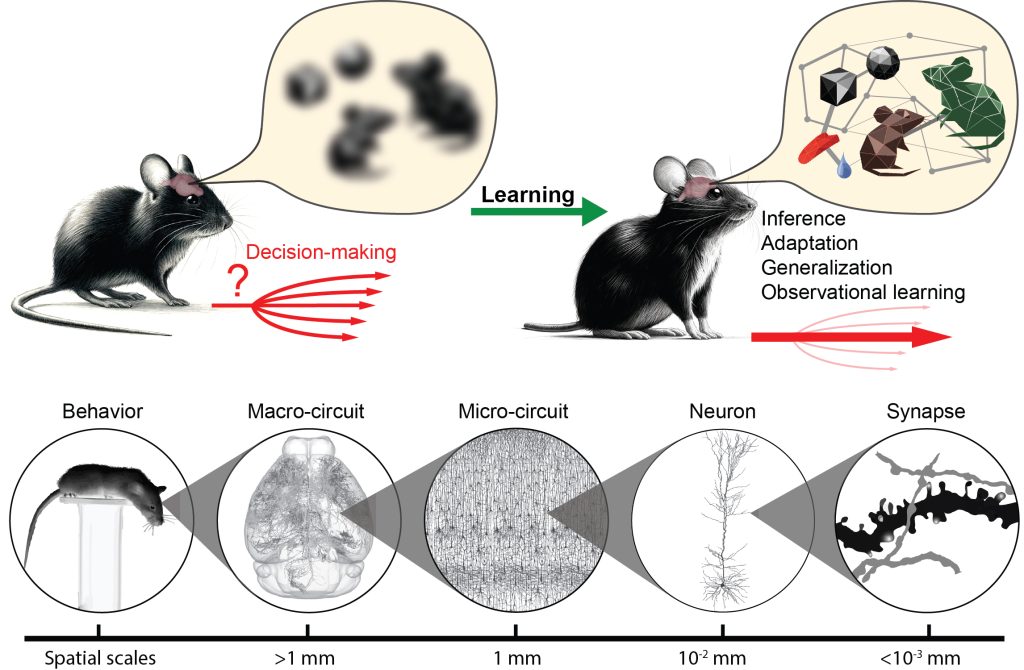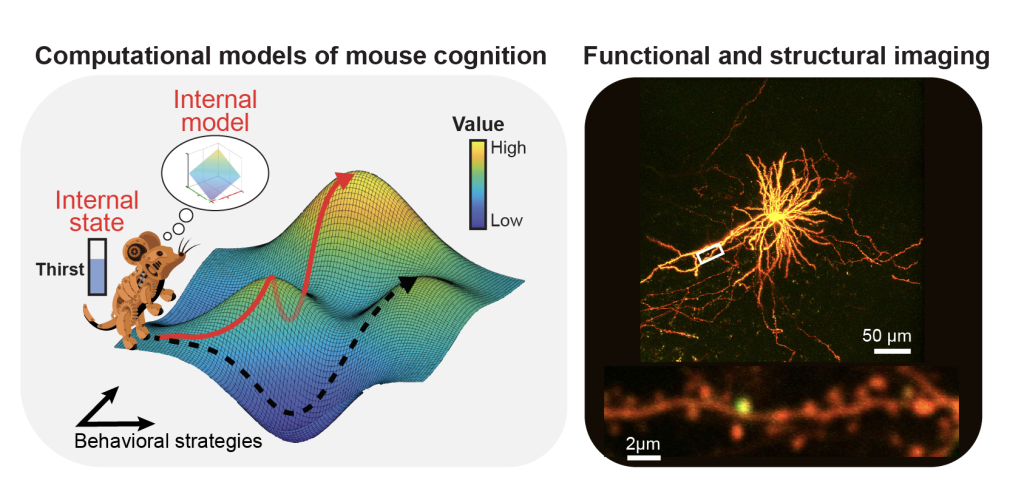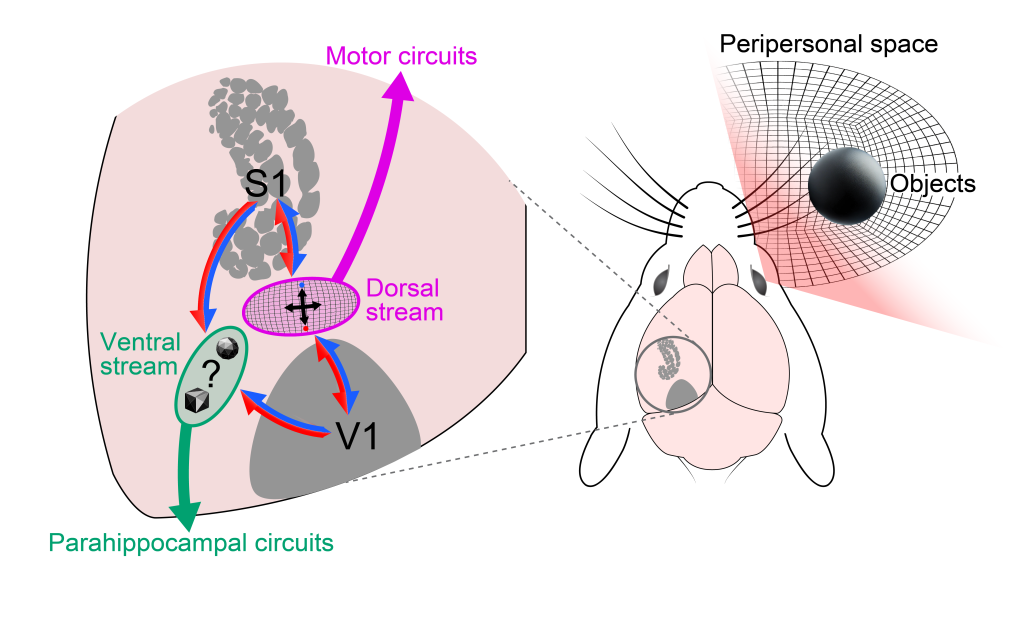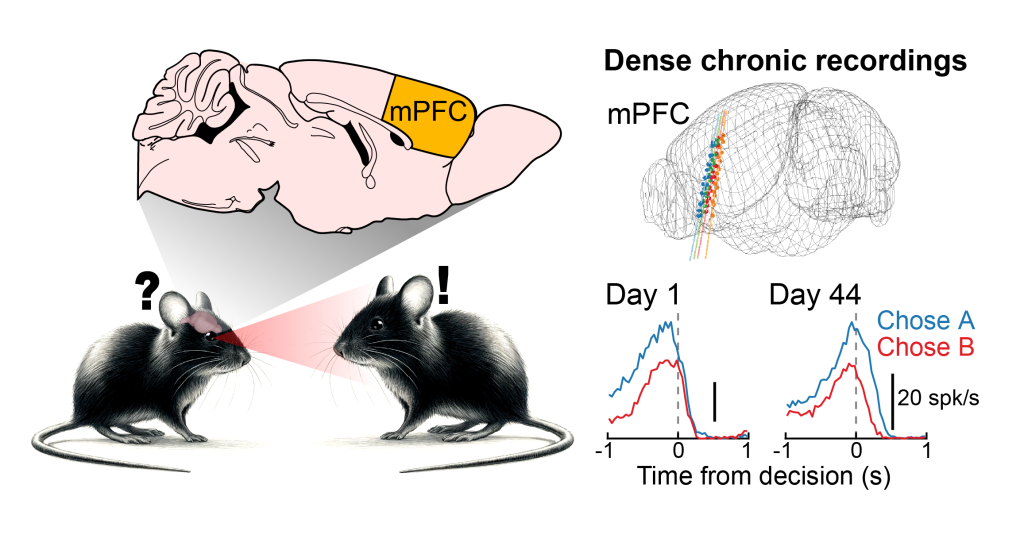Goals and strategy

Our Lab’s Vision
Every decision we make, from the mundane to the defining, reflects a complex orchestration of sensory, motor, limbic, and cognitive systems in the brain. Decision-making provides a unique window into cognition, influenced by an individual’s mental state and accumulated knowledge. While primate research has illuminated key circuit models for decision-making, mice now stand as an ideal model organism, thanks to advanced genetic tools, high-resolution imaging, electrophysiology, and machine learning-based behavioral analysis.
At our lab, we focus on unraveling the brain’s decision-making circuits, particularly the roles of internal states (e.g., motivation, attention) and internal representations (of the environment and others). Through our work, we strive to bridge cognitive, systems, and cellular neuroscience, offering a multi-scale understanding of the circuits driving decision-making—from synapses to behavior.
Goal-Directed Sensorimotor Learning and its Synaptic Origins

This research explores how synaptic mechanisms underpin sensorimotor learning in goal-directed behavior, emphasizing the role of motivation. We found that optimal motivation enhances whisker-based tasks, whereas low or excessive motivation impairs them. Using calcium imaging and optogenetic inactivation, we identified secondary somatosensory and premotor cortices as key hubs for sensorimotor transformations, with activity dynamically modulated by motivational state. We are now examining the detailed dynamics of learning during task acquisition through computational modeling and experiments, aiming to map spatiotemporal synaptic plasticity across multiple scales. By integrating advanced imaging, data analysis, and computational tools, we seek to link functional and structural synaptic changes to behavioral outcomes. Ultimately, this work advances understanding of how synaptic-level processes drive complex goal-directed behaviors, shedding light on fundamental principles of learning and decision-making.
Cortical Circuits for Visuo-Tactile Integration and Cross-Modal Learning

This research focuses on understanding how cortical circuits integrate visual and tactile information to support multisensory processing and cross-modal generalization, particularly in the peripersonal space where these sensory modalities interact. Mice trained on goal-directed sensorimotor tasks seamlessly transitioned between visual and tactile cues when spatial alignment between modalities was maintained. Using multiscale calcium imaging, several associative cortical domains were identified that integrate visuo-tactile inputs, with neurons responding selectively to congruent stimuli. Inactivation of dorsal stream activity disrupted task generalization, highlighting its critical role in spatial reasoning. Ongoing work explores how top-down attention modulates visuo-tactile integration during goal-directed behaviors. Attentional states reshape multisensory cortical representations, providing insights into how animals dynamically prioritize sensory inputs. This line of research advances our understanding of the neural mechanisms underlying multisensory integration and its modulation by both endogenous and exogenous attention, enabling flexible, goal-directed behavior.
Brain Circuits for Social Decision-Making and Observational Learning

This research explores how brain circuits enable social learning, joint decision-making, and communication strategies in mice. By combining innovative behavioral paradigms with advanced neural recording and computational tools, we investigate how mice incorporate social cues from conspecifics to inform their decisions and optimize reward outcomes. Observational learning experiments reveal that mice enhance their performance when observing the actions and outcomes of others. We are currently investiguating neural correlates in the the prefrontal cortex of mice performing these tasks. Further studies on cooperative and competitive will dissect how mice strategically prioritize social and sensory cues based on their reliability. This work will shed light on the neural mechanisms underlying social interaction and decision-making, providing valuable insights into the cortical processes that drive flexible, goal-directed behaviors in dynamic social environments.
